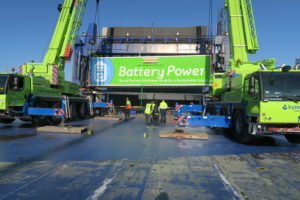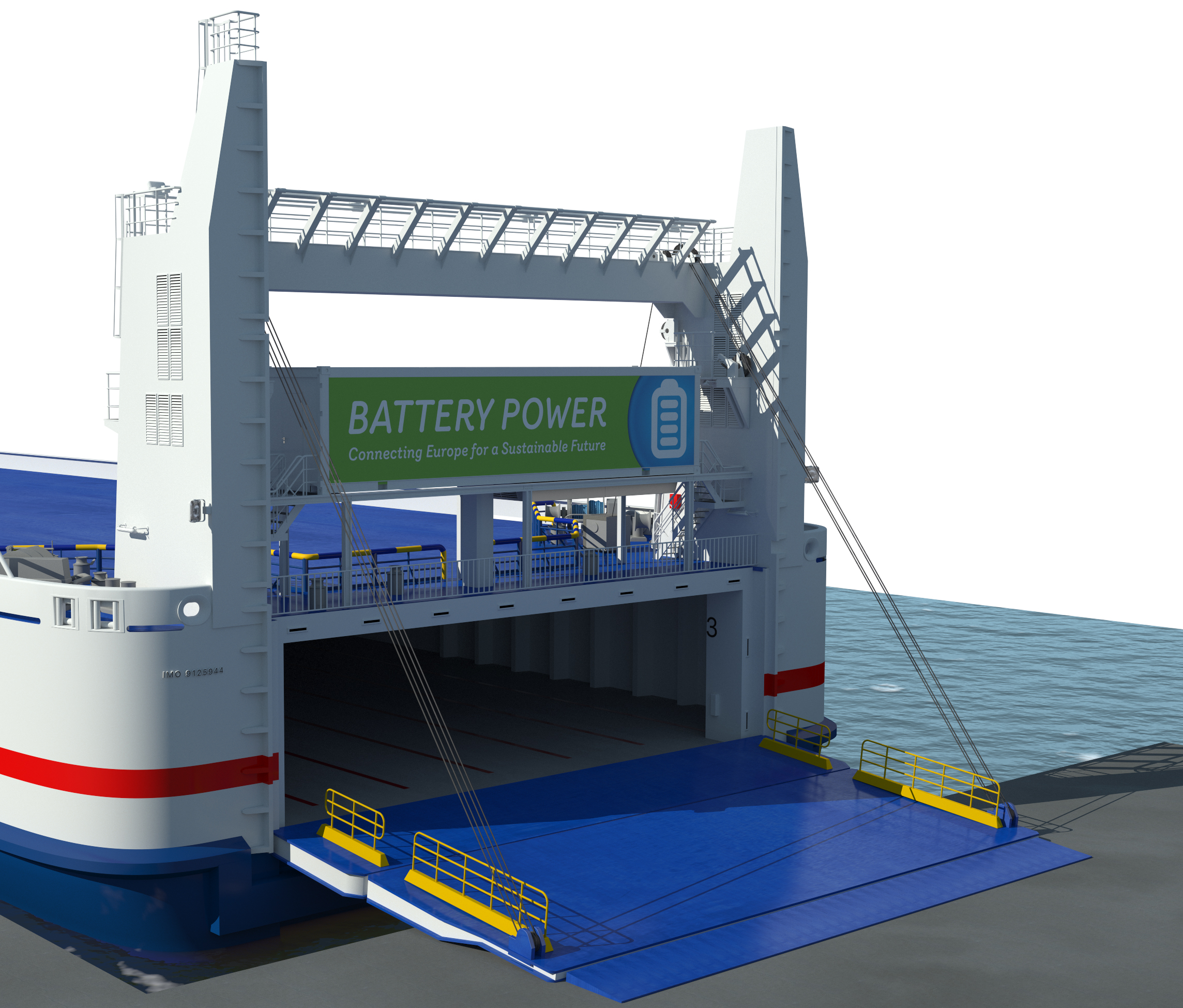European Parliament pushing for member states to give tax incentives to encourage green electricity from shore.
SWEDISH shipowner Stena is pushing ahead with battery trials on one of its ro-ro vessels after two months of success. It comes as the European Parliament pushes ahead with plans to remove tax barriers to clean fuel sources.
The ferry and roro operator announced earlier this year it had a three-stage plan to test electric propulsion. The first step began in the summer with the installation of a container full of battery technology above the stern ramp of Stena Jutlandica, a vessel on a daily shuttle between the Swedish port of Gothenburg and the nearby Danish port of Fredrikshavn.
The battery system is enough to provide power to allow for an auxiliary diesel generator to remain on standby when the vessel is undergoing port maneuvers. Effectively a form of peak shaving, the system is designed to provide power loads to bow thrusters and other equipment at short notice, enabling a more even and economical use of auxiliary engines, and even allow them to remain idle.
The system has been engineered by Swedish firm Callenburg Technology Group (a company owned by private-equity backed, US-based Trident Maritime Systems, and uses battery cells supplied by Corvus, a Norwegian-Canadian privately-owned business that has built up a strong track record in recent years installing battery systems.

Stena Jutlandia’s battery system has 1MWh capacity and can provide up to 3MW of power, and the company says trials have proven so successful over these first few months the company is already looking for other vessels on comparable routes on its network it can extend this project to. It is also working on stage two of the project which is to install even more power to allow one of the vessel’s main engines to be put into standby when entering port. Planning for this could take a couple of years, but there’s no immediate intention to remove the current system on Stena Jutlanica.
As well as saving fuel, and being good for the company’s environmental credentials as it cuts back on CO2 emissions, the switch will also create a significant reduction in noise when in port.
Step three of this project proposal will see if the vessel can be operationally successful running off electricity for the full sailing between Gothenberg and Fredrikshavn, a voyage of 50nm.
If this test proves to be successful, and if the economics make sense, then the company says up to a quarter of the Stena fleet may be suitable for full electric operations.
The challenges are however not insignificant. Battery cost, lifespan and of course power envelope are critical. Another challenger that is understood to be a deterrent to the use of battery recharging and cold-ironing for hotel load, is electricity tariffs. Some countries are understood to have electricity tariffs that make electricity supply less competitive to traditional bunkers which of course the industry is trying to move away from, but which are exempt from taxes.
The European Parliament is now pushing Brussels to do more to promote clean energy sources, which includes a proposal that will encourage EU member states to provide tax incentives.
Despite electricity and other clean bunkering not being classed in the same way as international bunkers, there have been a growing number of vessels built with battery installations in recent years, notably in Europe.
Some owners, such as Color Line, Grimaldi, in the short sea ro-ro and ro-pax space have built or ordered hybrid systems. Others, with smaller tonnage have already built and begin operating full battery powered vessels with systems that rely on shore-based recharging.
The European Parliament paper also notes that battery production is largely outside of the European bloc, the implication being that this could become a new energy risk in the future, given the push For electric vehicles in the Union. Stena has a small stake in a small Stockholm-based battery maker, Northvolt, a company founded by a former Tesla executive two years ago.
The company has secured initial funding and has begin the process of building production pants in Sweden and Poland to produce what it is already marketing as the cleanest battery, pointing to its manufacturing, materials sourcing and recycling of systems. Corvus announced recently its plans to increase battery production in Norway.
END
































